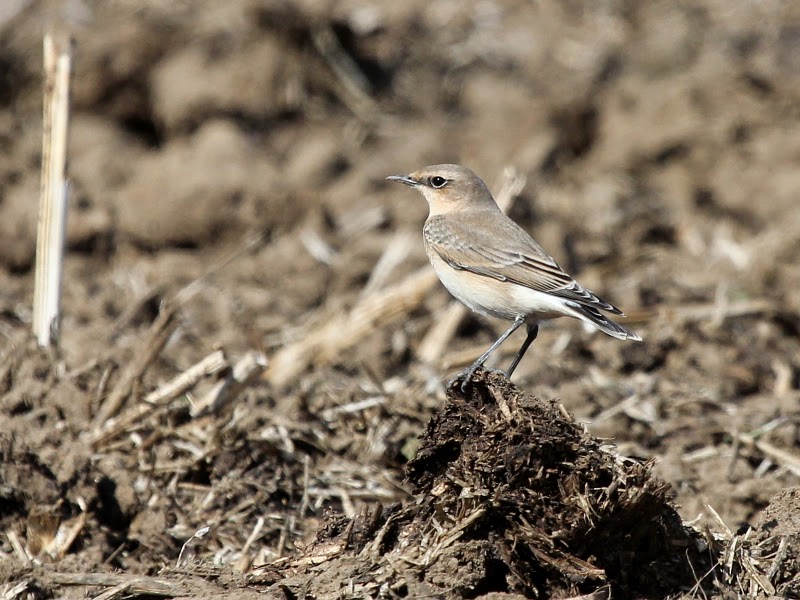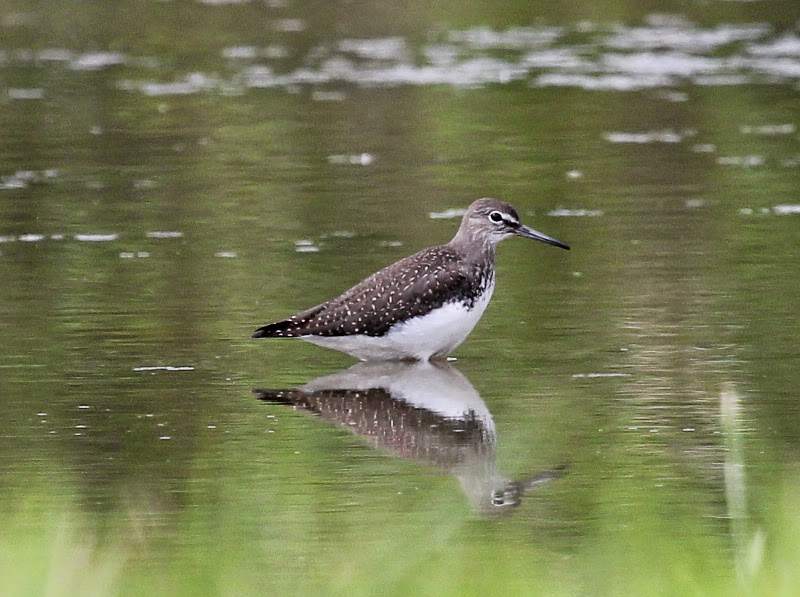With the winds continuing from a NW direction it was a case of more seawatching at Long Nab this morning. Micky and I arrived at the hut at 0640hrs and at 0641 Micky called out a large shearwater! Wow! However, with the bird fairly distant and us only having just started it was a little difficult to get our act together. Almost certainly a Cory's it seemed more prudent to let it go as a large Shearwater sp.
Once settled in properly it was clear that Fulmars and Manxies were again streaming by in good numbers. We grilled the various streams of birds heading north and at 0936hrs we both locked onto a large shearwater that was clearly a Cory's and doubtless the same bird that had passed Filey at 0850hrs. At 0950hrs Micky picked up another, more distant, large shearwater that was shearing far more than the Cory's. Plumage features and structure clearly matched Great Shearwater and we were able to watch it intermittently over a period of 20 minutes as it slowly moved north, seeing it pitch onto the sea with Kittiwakes at one point before it continued its way north. This was doubtless the same bird that passed Flamborough just before 0800hrs.
The final Manx Shearwater total reached 168, whilst Fulmars totalled 419 and other highlights from the morning included three Sooty Shearwaters, 12 Arctic Skuas and 16 Arctic Terns. A Sedge Warbler near the Crook Ness car park was, amazingly, a year tick for my Patchwork Challenge list. It is my third Acrocephalus species of the year following on from Marsh and Blyth's Reed Warbler in the spring, but I still need Reed Warbler for the year here!
To see the two larger shearwater species on a single seawatch at Long Nab is not quite unprecedented as both Great and Cory's were seen passing here on 8th August 2005. However, that appears to be the only previous occasion it has happened here and I presume is something that has happened fairly infrequently even at Flamborough.
It has been said by some birders that Long Nab has been punching above its weight in recent times and today would seem to be another one of those occasions. Personally, although delighted with recent highlights, I still don't think we have quite reached our full potential and there will hopefully be many more avian gems to be unearthed at this still, under-watched location.


















